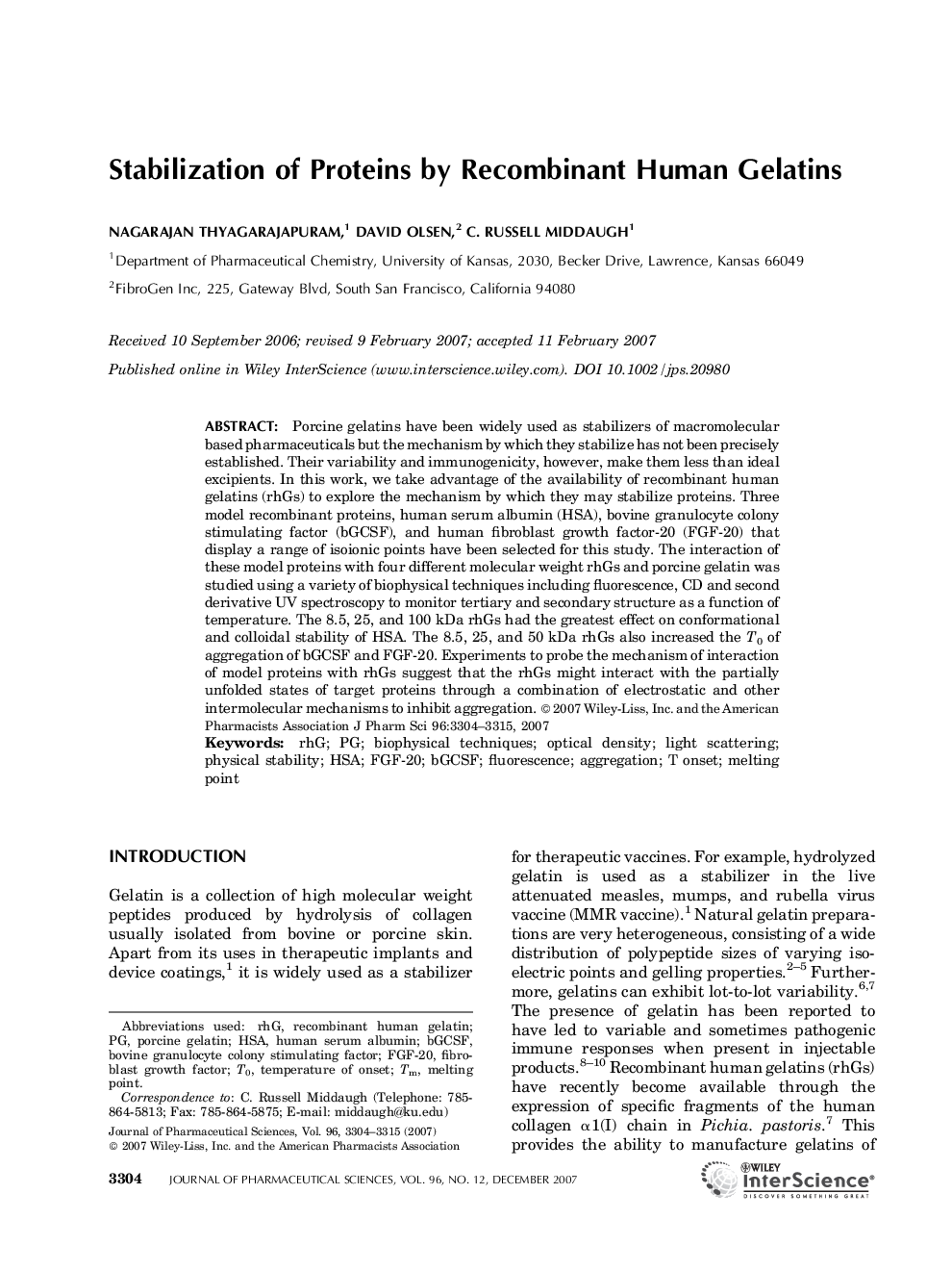| Article ID | Journal | Published Year | Pages | File Type |
|---|---|---|---|---|
| 2487630 | Journal of Pharmaceutical Sciences | 2007 | 12 Pages |
Abstract
Porcine gelatins have been widely used as stabilizers of macromolecular based pharmaceuticals but the mechanism by which they stabilize has not been precisely established. Their variability and immunogenicity, however, make them less than ideal excipients. In this work, we take advantage of the availability of recombinant human gelatins (rhGs) to explore the mechanism by which they may stabilize proteins. Three model recombinant proteins, human serum albumin (HSA), bovine granulocyte colony stimulating factor (bGCSF), and human fibroblast growth factorâ20 (FGFâ20) that display a range of isoionic points have been selected for this study. The interaction of these model proteins with four different molecular weight rhGs and porcine gelatin was studied using a variety of biophysical techniques including fluorescence, CD and second derivative UV spectroscopy to monitor tertiary and secondary structure as a function of temperature. The 8.5, 25, and 100Â kDa rhGs had the greatest effect on conformational and colloidal stability of HSA. The 8.5, 25, and 50Â kDa rhGs also increased the T0 of aggregation of bGCSF and FGFâ20. Experiments to probe the mechanism of interaction of model proteins with rhGs suggest that the rhGs might interact with the partially unfolded states of target proteins through a combination of electrostatic and other intermolecular mechanisms to inhibit aggregation. © 2007 WileyâLiss, Inc. and the American Pharmacists Association J Pharm Sci 96: 3304-3315, 2007
Keywords
Related Topics
Health Sciences
Pharmacology, Toxicology and Pharmaceutical Science
Drug Discovery
Authors
Nagarajan Thyagarajapuram, David Olsen, C.Russell Middaugh,
